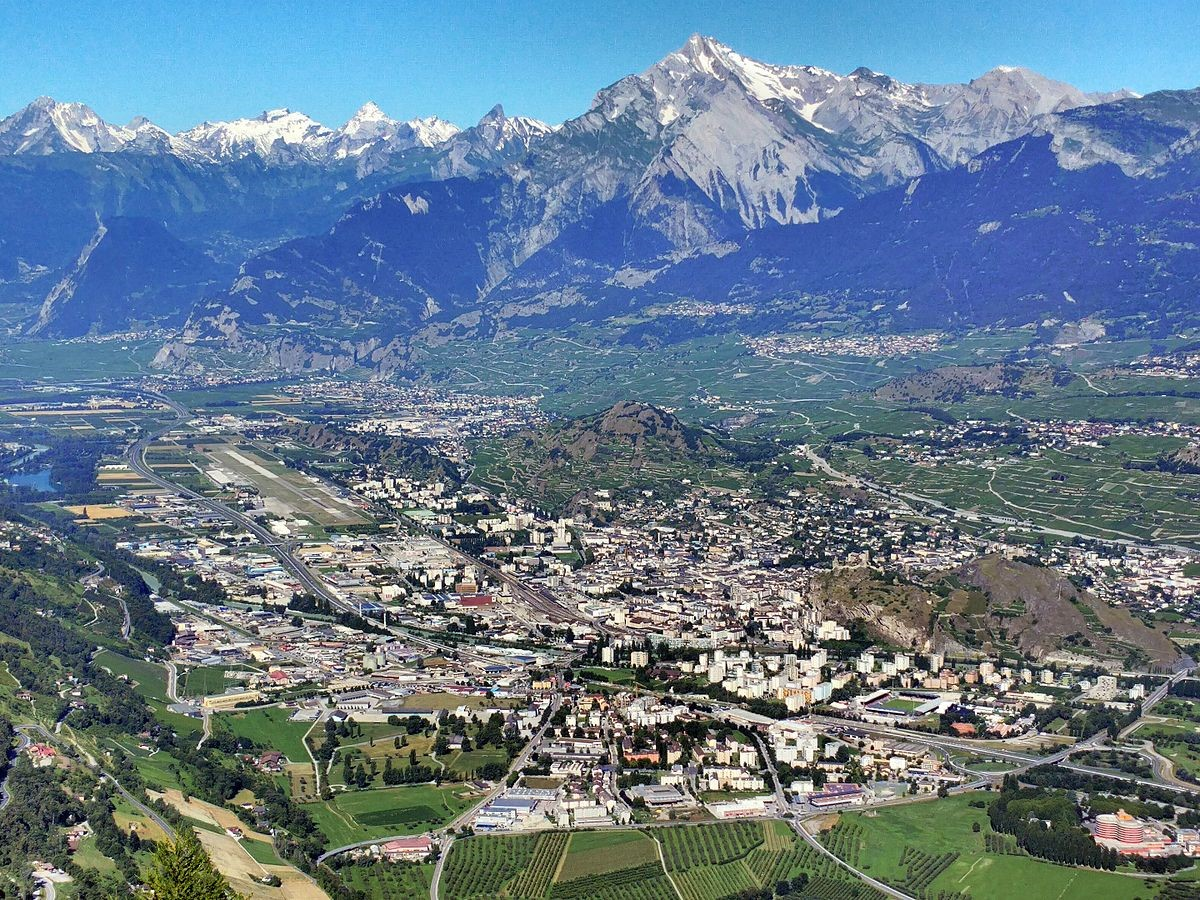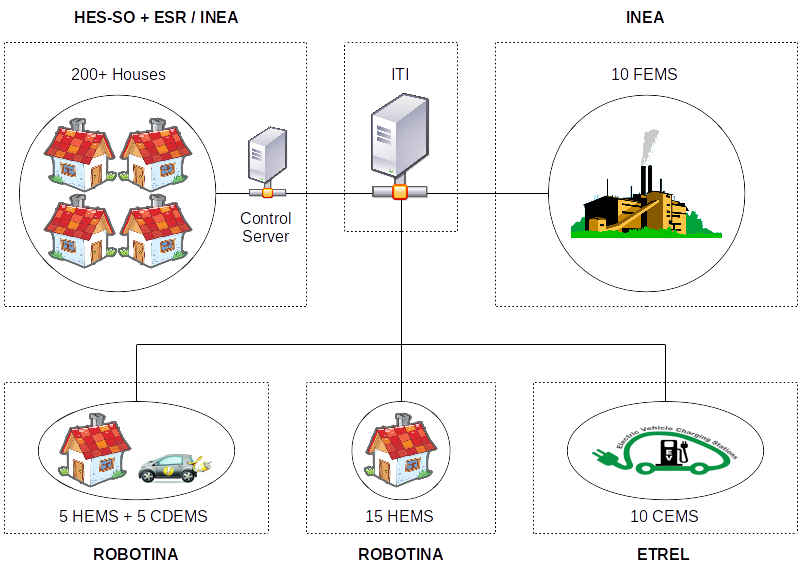
The local trial in SwitzerlandOptimising the balance for the distribution system operator
Location:Valais, Switzerland
Main objective:
In Valais, the GOFLEX teams aims at optimising the balance for the distribution system operator to reduce corrective costs and use demand-side management to reduce peak loads on the distribution grid, thus reducing the need of upgrading the infrastructure in areas where decentralized PV production is increasing.
Contact:
Pierre Roduit, Professor, Head of Institute at HES-SO Valais-Wallis
University of Applied Sciences and Arts Western Switzerland (HES-SO)
https://www.hevs.ch/en/
Valais is located in the middle of the Swiss Alps where the main share of energy is produced by hydroelectric power plants. However, with Sion (capital of the canton Valais, Figure 1) enjoying more than 2000 hours of sunshine and state subsidies in place, the share of solar energy is expected to grow in the future.
Energie Sion Région (ESR) is a Swiss utility company located in Sion that serves multiple roles, such as electricity supplier, electricity producer, distribution system operator (DSO), water and gas supplier, internet provider, etc. It possesses more than 55'000 electricity cus-tomers and distributes more than 500 GWh of electricity per year. In the scope of this demonstration case, ESR will serve as both energy provider and DSO. To launch the GOFLEX demonstration site in Valais, ESR has teamed up with the Institute of System Engineering of the University of Applied Sciences and Arts Western Switzerland (HES-SO). One of the two main axes of research of the institute is energy. HES-SO will serve as an integrator, support ESR during the demonstration phase, and coordinate the pilot experiments.
With more than 400 registered PV producers, numerous Small-to-Medium Enterprises and other big electricity consumers, the area of Sion is highly suitable for testing the GOFLEX solution. In the framework of this demonstration site, ESR and HES-SO plan to actively involve at least 10 industrial partners and 200 to 250 residential customers. Additionally, 10 electric vehicle charging stations are installed within the framework of GOFLEX.
Regarding the 200 to 250 residential customers, the goal is to involve at least 50 households with both a photovoltaic system and a heat pump, 100 to 150 households with a photovoltaic system and resistive electric heating and some electric car owners. The remaining households are only equipped with electrical heating.

» The possibility of trading the operational flexibility available from various types of prosumers is at the core of our approach. «
Pierre Roduit, Professor, Head of Institute at HES-SO Valais-Wallis
Pierre Roduit, Professor, Head of Institute at HES-SO Valais-Wallis
Interviewwith Georges Darbellay, ESR, Director for strategy and development projects
What are the long-term benefits you expect from being part in the GOFLEX project?
Big changes are affecting or will affect ESR, in particular the full liberalization of the electricity market, liberalization of the gas market, growth of solar production, self-consumption with the help of solar production, increasing difficulty to predict the production, competition in data acquisition and data management, low energy prices, market prices lower than production costs.
Participating in this research project will enable ESR to explore new avenues to better serve its customers and shareholders (local communities). It will help us to be better equipped for the necessary adaptation to the energy transition. ESR is looking to put into place as quickly as possible new ways to make a success out of the energy transition. In particular, we are aiming at offering to our customers the right products and services so that the energy transition will be a gain for all stakeholders.For distributors, the energy transition will require that we find a cost-effective way of using Demand Side Management. Our objective is to find a business model for energy storage in general and demand side management in particular. We are interested in doing it at the level of a medium-sized distributor and then extend in cooperation with other distributors.
How will prosumers and consumers that participate in GOFLEX benefit?
The possibility of trading the operational flexibility available from various types of prosumers is at the core of our approach. The demand response framework derived by this approach is based on techno-economic considerations from both the prosumer and the system operator, which respectively deliver and exploit the demand response potential based on their highest economical yield. In particular, the objectives and related solutions targeted by GOFLEX will deliver demand response schemes that are beneficial for the consumers (or prosumers) by means of:- Trading of flexibility which allows prosumers and aggregators to extend their business by supply of demand response resources, thus achieving additional economical gain.
- Technologies for virtual storage, which ultimately reduce the cost of energy storage, compared to the explicit energy storage devices and systems.
- Demand response management systems for buildings or homes which increase involvement in demand response schemes and deliver part of the economic benefits to the final consumers.


 The project Generalized Operational FLEXibility for Integrating Renewables in the Distribution Grid (GOFLEX) has received funding from the European Union's Horizon 2020 research and innovation programme under grant agreement No 731232.
The project Generalized Operational FLEXibility for Integrating Renewables in the Distribution Grid (GOFLEX) has received funding from the European Union's Horizon 2020 research and innovation programme under grant agreement No 731232.